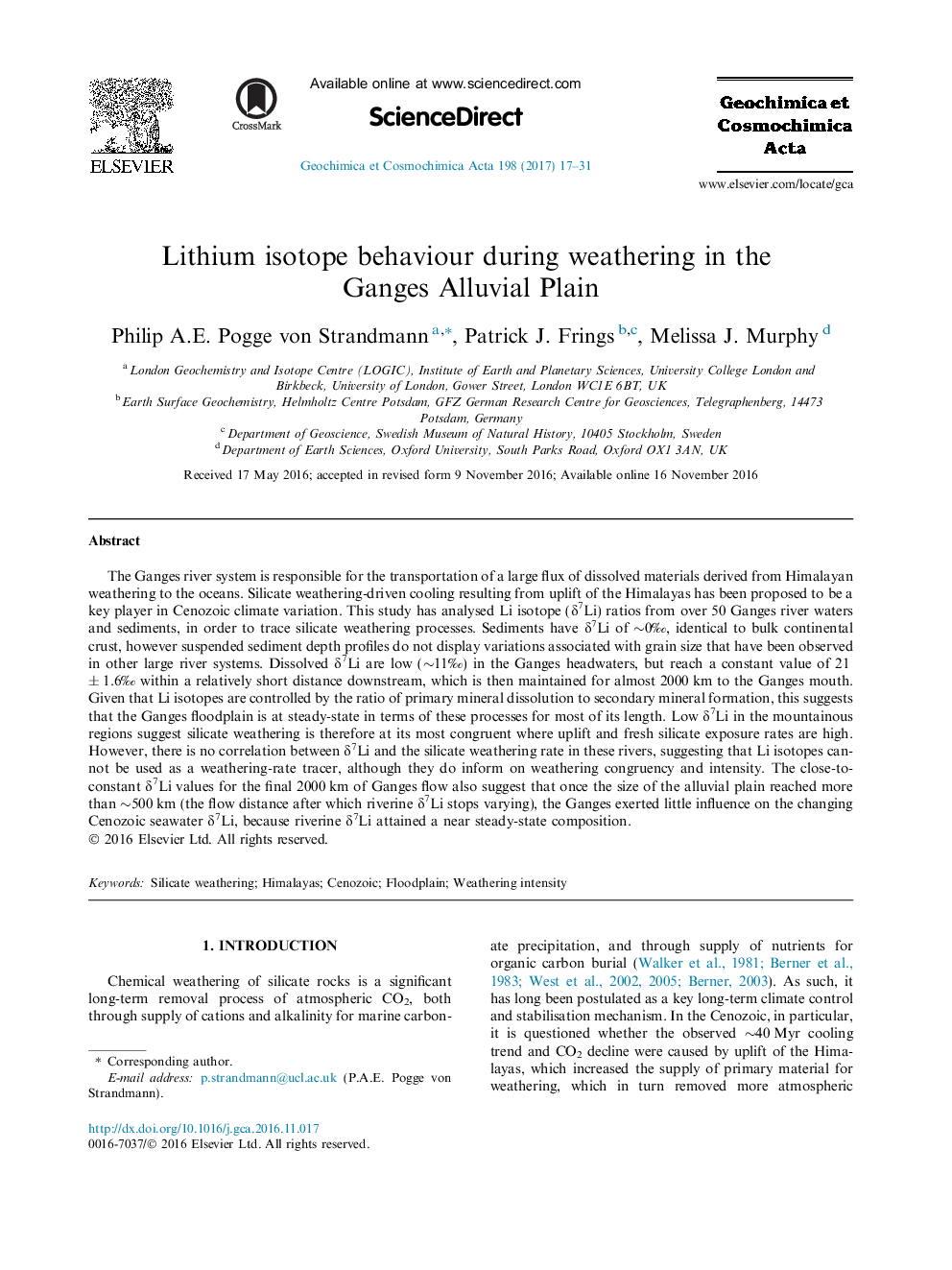| کد مقاله | کد نشریه | سال انتشار | مقاله انگلیسی | نسخه تمام متن |
|---|---|---|---|---|
| 5783614 | 1637959 | 2017 | 15 صفحه PDF | دانلود رایگان |
عنوان انگلیسی مقاله ISI
Lithium isotope behaviour during weathering in the Ganges Alluvial Plain
ترجمه فارسی عنوان
رفتار ایزوتوپی لیتیوم در طی هوای سالم در دشت آلوئه ای
دانلود مقاله + سفارش ترجمه
دانلود مقاله ISI انگلیسی
رایگان برای ایرانیان
کلمات کلیدی
هوای سیلیکات، هیمالیا کنزوئیک، سیب زمینی، شدت آب و هوا،
موضوعات مرتبط
مهندسی و علوم پایه
علوم زمین و سیارات
ژئوشیمی و پترولوژی
چکیده انگلیسی
The Ganges river system is responsible for the transportation of a large flux of dissolved materials derived from Himalayan weathering to the oceans. Silicate weathering-driven cooling resulting from uplift of the Himalayas has been proposed to be a key player in Cenozoic climate variation. This study has analysed Li isotope (δ7Li) ratios from over 50 Ganges river waters and sediments, in order to trace silicate weathering processes. Sediments have δ7Li of â¼0â°, identical to bulk continental crust, however suspended sediment depth profiles do not display variations associated with grain size that have been observed in other large river systems. Dissolved δ7Li are low (â¼11â°) in the Ganges headwaters, but reach a constant value of 21 ± 1.6â° within a relatively short distance downstream, which is then maintained for almost 2000 km to the Ganges mouth. Given that Li isotopes are controlled by the ratio of primary mineral dissolution to secondary mineral formation, this suggests that the Ganges floodplain is at steady-state in terms of these processes for most of its length. Low δ7Li in the mountainous regions suggest silicate weathering is therefore at its most congruent where uplift and fresh silicate exposure rates are high. However, there is no correlation between δ7Li and the silicate weathering rate in these rivers, suggesting that Li isotopes cannot be used as a weathering-rate tracer, although they do inform on weathering congruency and intensity. The close-to-constant δ7Li values for the final 2000 km of Ganges flow also suggest that once the size of the alluvial plain reached more than â¼500 km (the flow distance after which riverine δ7Li stops varying), the Ganges exerted little influence on the changing Cenozoic seawater δ7Li, because riverine δ7Li attained a near steady-state composition.
ناشر
Database: Elsevier - ScienceDirect (ساینس دایرکت)
Journal: Geochimica et Cosmochimica Acta - Volume 198, 1 February 2017, Pages 17-31
Journal: Geochimica et Cosmochimica Acta - Volume 198, 1 February 2017, Pages 17-31
نویسندگان
Philip A.E. Pogge von Strandmann, Patrick J. Frings, Melissa J. Murphy,
